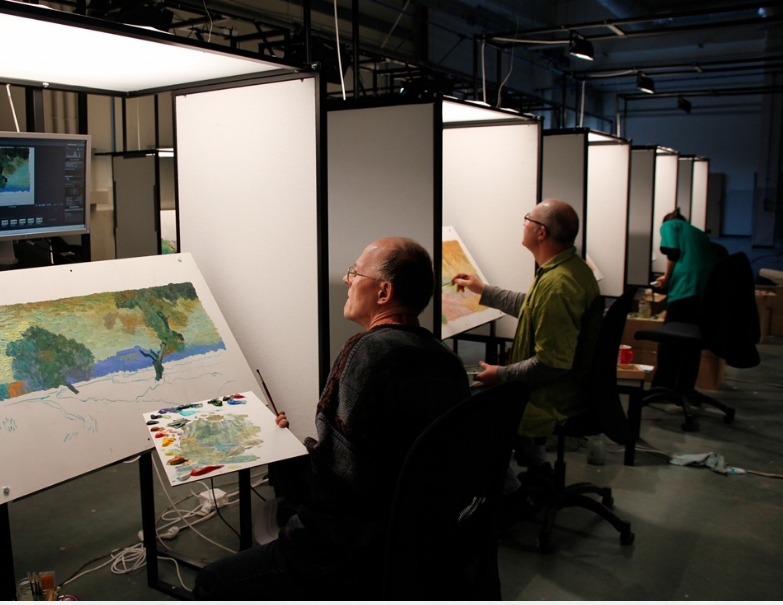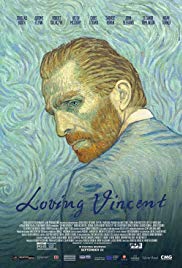
LOVING VINCENT
SUBJECTS — Visual Arts, Cinema, World History/Other Cultures: France;
SOCIAL-EMOTIONAL LEARNING — Brothers, Mental Illness
MORAL-ETHICAL EMPHASIS — Caring
AGE; 13+
2017, PG-13; 1h 34m; color. Available from Amazon.com.
MENU
MOVIE WORKSHEETS & STUDENT HANDOUTS
For English Language Arts classes, distribute TWM’s Film Study Worksheet. Teachers can modify the worksheet to fit the needs of each class. Ask students to fill out the worksheet as they watch the film or at the film’s end.
Click here for TWM’s lesson plans to introduce cinematic and theatrical technique.
Artists painting frames for the movie.
DESCRIPTION
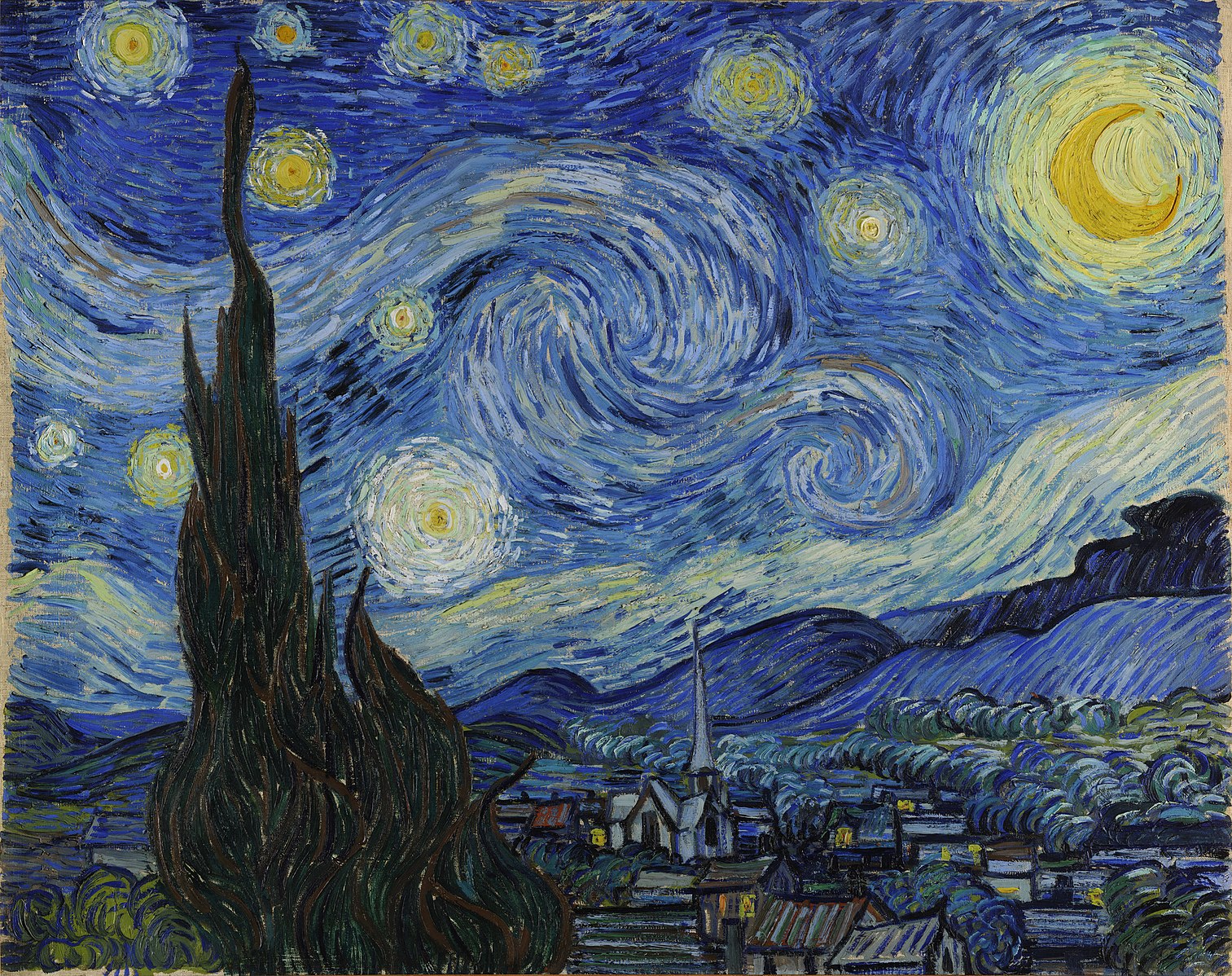
The Starry Night – 1889
This film is a visual delight for anyone familiar with the work of Vincent Van Gogh. Featuring 65,000 oil-painted frames derived from 120 of Van Gogh’s better-known works, the movie is an innovative and creative use of the cinematic art. The story follows the increasing fascination of a fictional Armand, the son of the Postmaster of Arles. A year after Vincent’s death a letter to his brother Theo has surfaced. The Postmaster, one of Vincent’s few friends, sends his son to deliver the letter. Initially, reluctant to undertake the journey, Armand becomes fascinated with the question, unresolved by history, of whether Vincent shot himself as he claimed or was the victim of an accidental shooting by some irresponsible young acquaintances.
SELECTED AWARDS & CAST
Directors: Dorota Kobiela, Hugh Welchman
Selected Cast: Douglas Booth, Josh Burdett, Holly Earl, Robin Hodges, Chris O’Dowd
Selected Awards: Nominated for: 2018 Academy Awards: Best Animated Feature Film; 2018 Golden Globe Awards: Best Motion Picture – Animated; 2018 BAFTA Awards: Best Animated Feature Film.
BENEFITS OF THE MOVIE
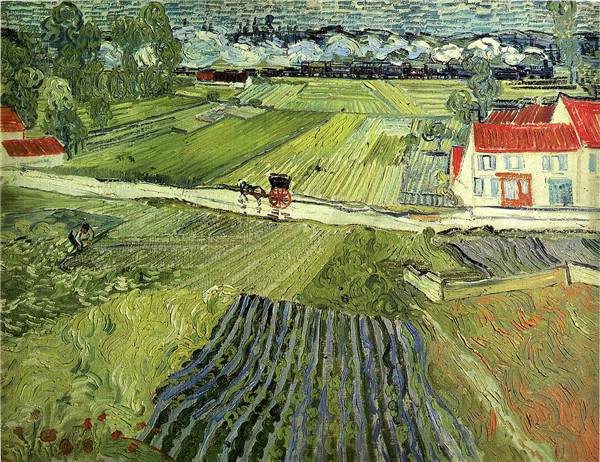
Landscape with Carriage – 1890
This film is a demonstration that with creativity the medium of film can be stretched in unusual directions with beautiful results.
The film allows any viewer who has studied Van Gogh or who is familiar with his work, to revel in Van Gogh’s colorful imagery. It shows that the true story of an event cannot always be reconstructed, and that history cannot always tell us exactly what happened in the past.
POSSIBLE PROBLEMS
None.
PARENTING POINTS
Before showing your children the movie, make sure they are acquainted with some of the great paintings by Vincent Van Gogh. Click here for Van Gogh’s Paintings Adapted in Loving Vincent.
HELPFUL BACKGROUND
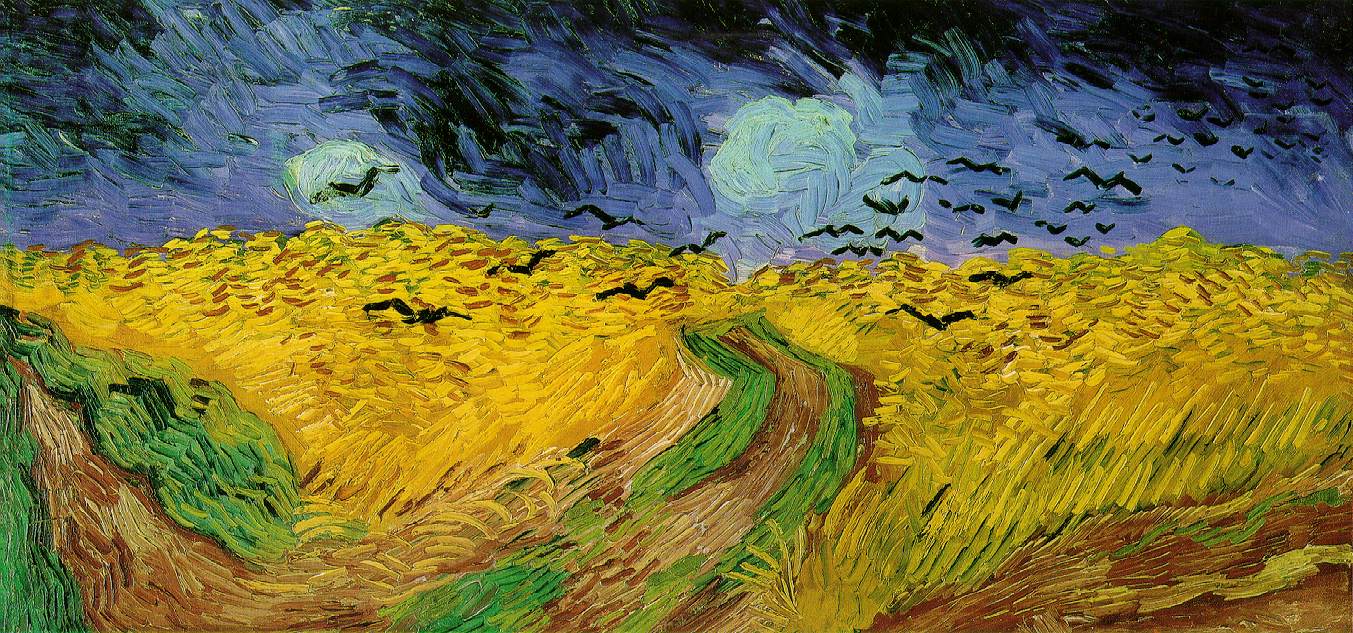
Wheatfield with Crows – 1890
Click here for “Van Gogh’s Paintings Adapted in Loving Vincent”
USING THE MOVIE IN THE CLASSROOM
Make sure that students are familiar with the work of Vincent Van Gogh before showing this film.
Some Great Van Gogh quotes to share with the class:
“I want to touch people with my art. I want them to say, “He feels deeply, he feels tenderly.”
“Instead of reproducing exactly what I see before me, I make more arbitrary use of color to express myself more forcefully.”
“Real painters do not paint things as they are – they paint them as they themselves feel them to be.”
“… In all nature, for instance in trees, I see expression and soul ….” Letter 5/11/1882
“What am I in the eyes of most people? A good-for-nothing, an eccentric and disagreeable man, somebody who has no position in society and never will have. Very well, even if that were true, I should want to show by my work what there is in the heart of such an eccentric man, of such a nobody.”
Activity: Van Gogh and Turbulent Flow
A treat for any class familiar with the Van Gogh painting “Starry Night” will be to ask them to compare the following two shorts. One is the 4 minute, 38 second, animated TedEd by Natalia St. Clair, The Unexpected Math Behind Van Gogh’s “Starry Night.”
The second short is an eight minute interview David Hockney on Vincent Van Gogh
After viewing the short subjects, ask the class: How was Vincent van Gogh able to put fairly accurate renditions of turbulent flow in some of his paintings?
Note for Teachers: Explanation of the Comparison
One of the great unsolved problems in physics is how to mathematically describe turbulent flow in phenomena such as swirling water, the air from a jet engine, or dust and gas turbulence from a star. The TedEd is based on a peer-reviewed scientific paper that demonstrates the amazing parallels between turbulent flow as it actually manifests itself in nature and the swirls in paintings that Van Gogh made when he was at the peak of his suffering. The short concludes that, “[I]n a period of intense suffering, Van Gogh was somehow able to perceive and represent one of the most supremely difficult concepts nature has ever brought before mankind, and to unite his unique mind’s eye with the deepest mysteries of movement, fluid, and light. ”Other paintings by Van Gogh showing turbulent flow are “Wheat Field with Crows” and “Road with Cypress and Star.” The TedEd animation is based on the paper “Turbulent luminance in impassioned van Gogh paintings” by J.L. Aragon et al appearing in the Journal of Mathematical Imaging and Vision, March 2008, Volume 30, Issue 3, pp 275–283
David Hockney says of Van Gogh, who painted many landscapes, “He saw clearly, very very clearly.” Thus, the fact that Van Gogh was able to accurately describe turbulent flow is not really surprising. As an artist, Van Gogh would have to be a keen observer of nature. What he painted was what he had seen in a stream or some other natural element.
DISCUSSION QUESTIONS
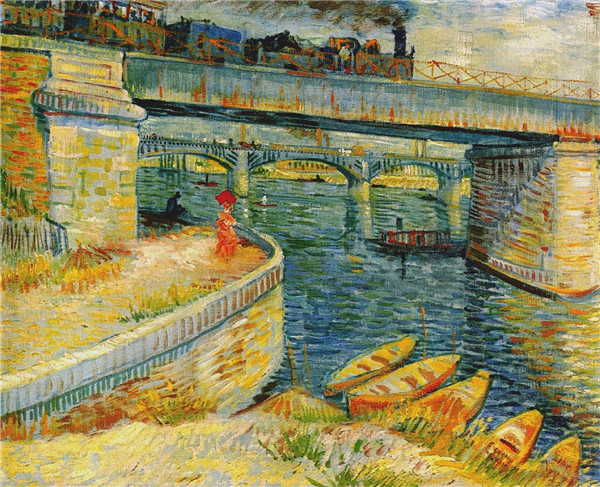
Bridges Across the Seine at Asnieres – 1887
1. What does this film show us about history?
Suggested Response:
It demonstrates that we cannot completely reconstruct what occurred and that sometimes what actually happened will remain a mystery.
2. Do you think Van Gogh shot himself or was he most likely shot by accident by the young men of the neighborhood who were playing with guns?
Suggested Response:
There is no one correct answer but a strong response would include the following: a) Van Gogh did suffer from mental illness and had mutilated himself in the past; b) while he loved to paint, all else in his life was miserable: he had no close friends but Theo, he was chronically short of money and often didn’t have enough to eat, c) his work was not recognized as being any good; and d) many people who attempt suicide do not succeed and end up injuring themselves.
SOCIAL-EMOTIONAL LEARNING
Mental Illness:
1. What does the experience of Vincent Van Gogh tell you about people who are mentally ill?
Suggested Response:
(1) They can still make valuable contributions to society, especially if they are able to communicate a different way to see the world.
(2) They can be difficult to deal with and at times dangerous to themselves and others. It is hard to know when to exclude them or confine them for their own protection or to protect yourself. Teachers might read to the class the last in the Van Gogh quotes set out above.
2. Who was right, Theo Van Gogh who protected and nurtured his brother or the people of Arles who excluded Vincent?
Suggested Response:
See Suggested Response above. Also, a strong response will note that Theo and the people of Arles approached Vincent from different perspectives.
ASSIGNMENTS, PROJECTS & ACTIVITIES
1. Write a paper on Van Gogh’s use of impasto.
2. Write a paper on Van Gogh’s use of color.
OTHER FILMS ON VINCENT VAN GOGH
- Akira Kurosawa’s Dreams (1990);
- Lust for Life (1956) directed by Vincent Minelli, starring Kirk Douglas;
- Vincent & Theo (1990) Directed by Robert Altman, starring Tim Roth and Paul Rhys;
- At Eternity’s Gate (2018) directed by Julian Schnabel and starring Willem Dafoe; Vincent (1987) a documentary directed by Paul Cox which explores the last eight years of the artist’s life; and
- Van Gogh (1991) Directed by Maurice Pialat.
LINKS TO THE INTERNET
- How Did Van Gogh’s Turbulent Mind Depict One of the Most Complex Concepts in Physics?
- Van Gogh painted perfect turbulence online version, July 7, 2006
- Vincent van Gogh on Art and the Power of Love in Letters to His Brother – from Brainpickings
Shorts about how the movie was made:
BIBLIOGRAPHY
Papers and documents cited in the body of the Learning Guide.
This Learning Guide was written by James Frieden and was last updated on August 25, 2019.


